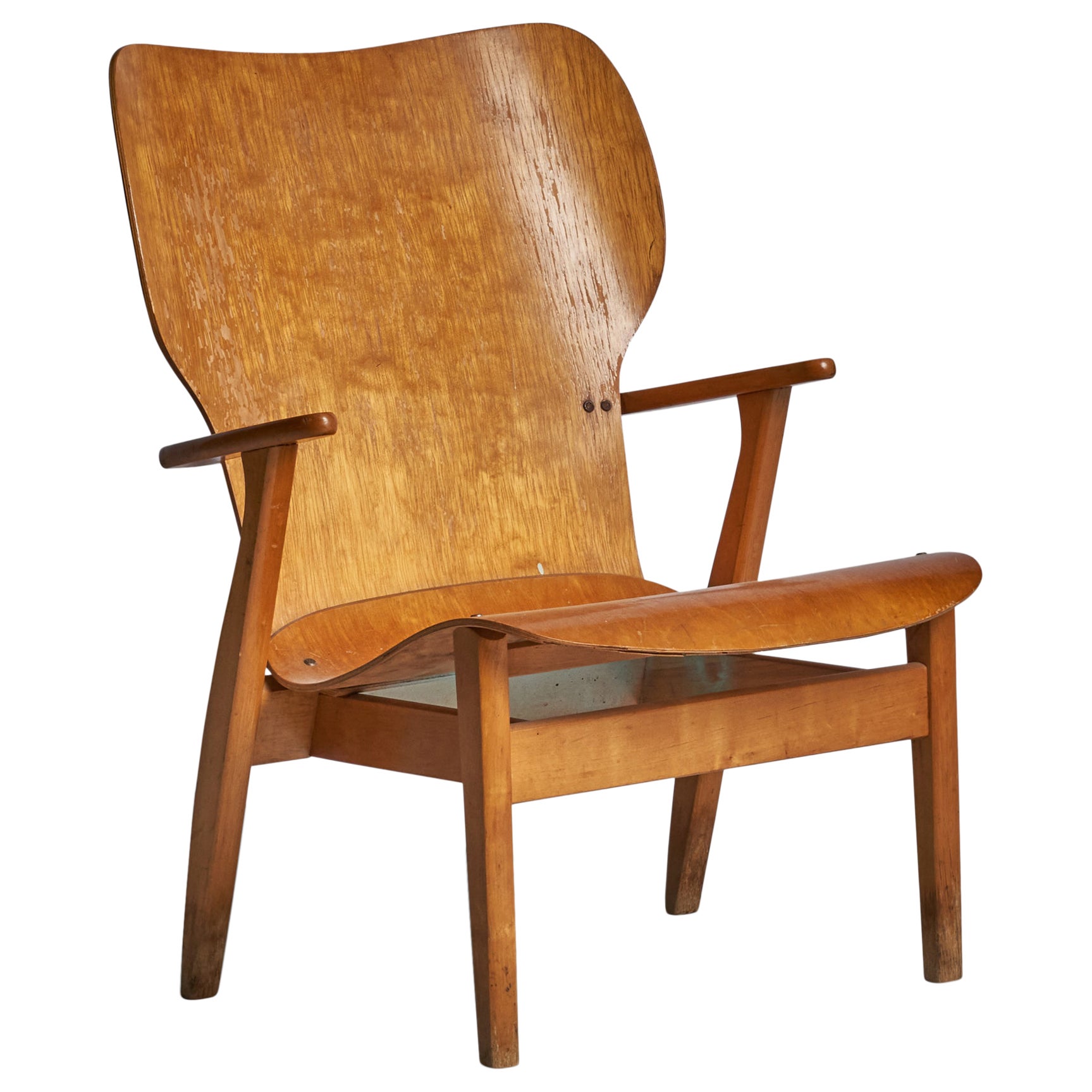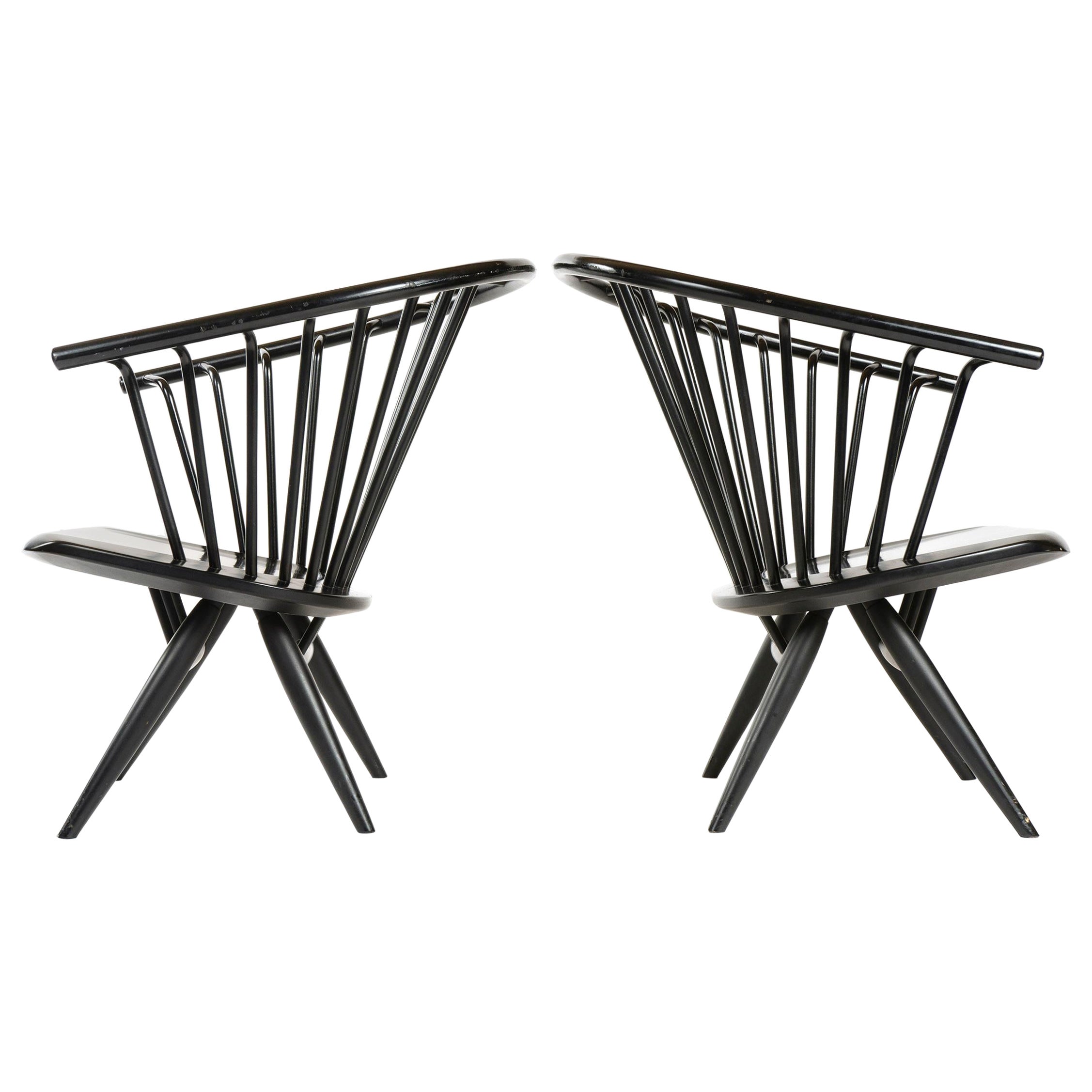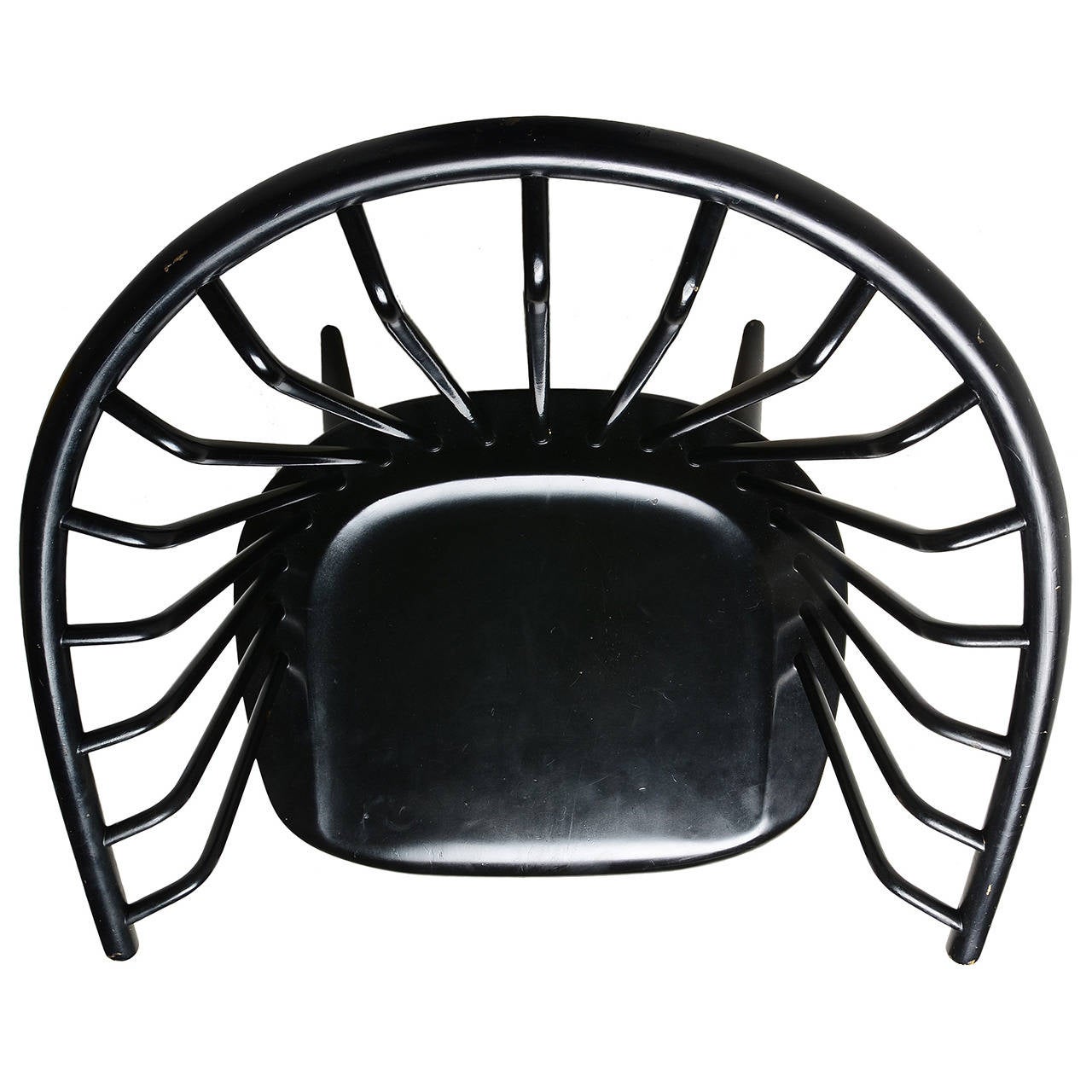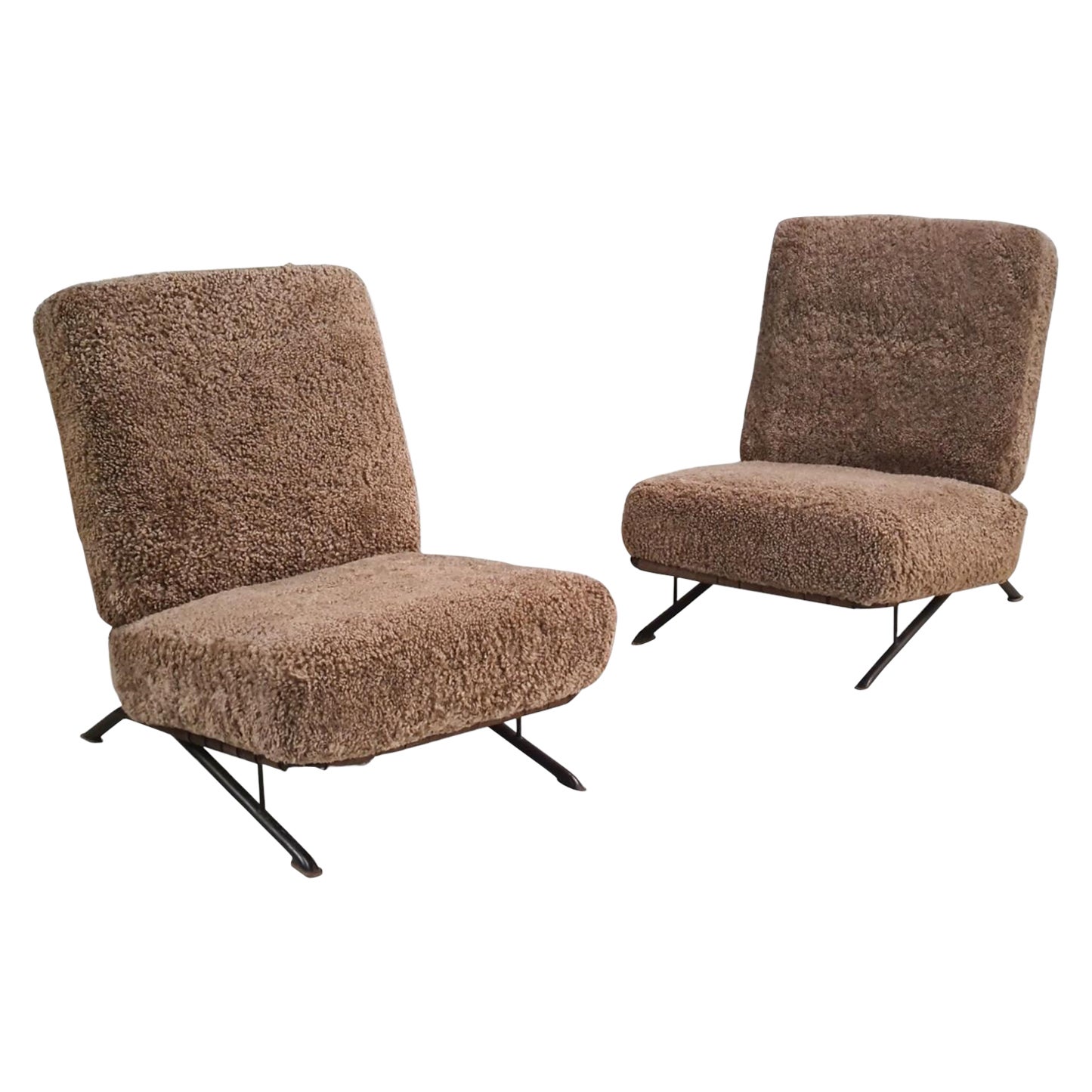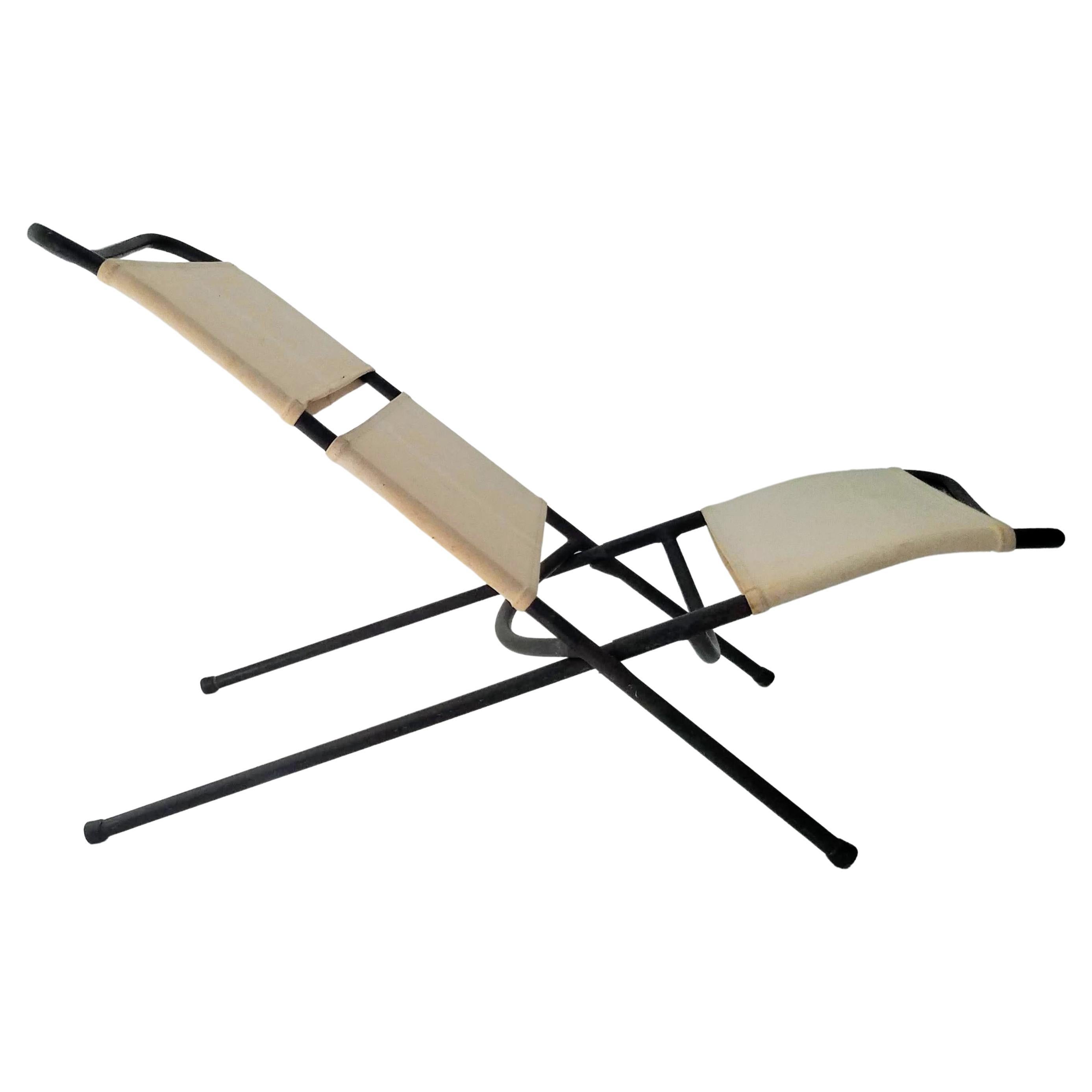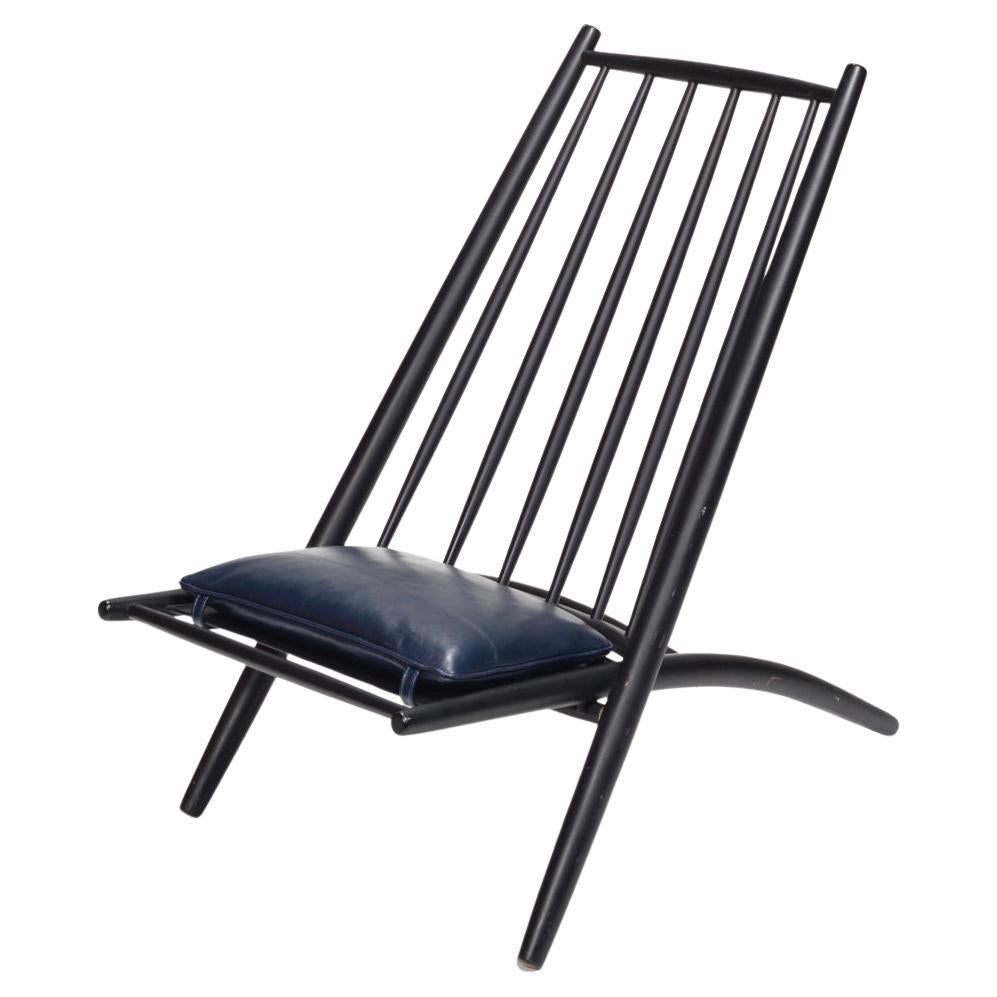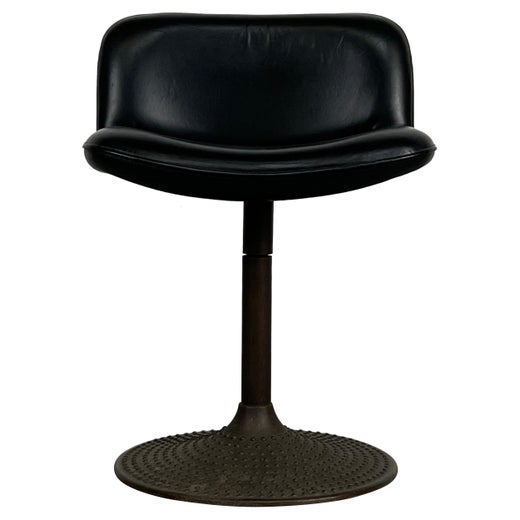Pair of Red Midcentury Lounge Chairs Model “2468” Ilmari Tapiovaara, Finland
About the Item
- Creator:Laukaan Puu (Manufacturer),Ilmari Tapiovaara (Designer)
- Dimensions:Height: 30.32 in (77 cm)Width: 25.99 in (66 cm)Depth: 27.56 in (70 cm)
- Style:Mid-Century Modern (Of the Period)
- Materials and Techniques:
- Place of Origin:
- Period:
- Date of Manufacture:1959
- Condition:Reupholstered. Wear consistent with age and use.
- Seller Location:Barcelona, ES
- Reference Number:1stDibs: LU2374320634442
Ilmari Tapiovaara
During the mid-20th century, Finnish furniture designer Ilmari Tapiovaara worked with pine, teak and his country’s native birch to create sleek and sculptural chairs, dining room tables and bookcases in the Scandinavian modern style. Tapiovaara’s areas of expertise expanded beyond furniture to include interior architecture, wooden sculptures, film posters and cutlery.
After completing his studies at the Central School of Applied Arts in Helsinki, Tapiovaara embarked on a design career that would envelop his entire life. As a young man, Tapiovaara idolized revered architect and furniture designer Alvar Aalto — whom, with his wife, Aino Aalto, cofounded Artek, the company that would eventually manufacture the majority of Tapiovaara’s creations. The budding designer had one of Aalto’s chairs in his apartment while he was a student. After graduating, he worked as an assistant in an office at Le Corbusier, then as a designer and artistic director at Asko.
By 1951, Tapiovaara and his wife, Annikki, had established their own studio. A few years previous, the pair had designed the now-legendary Domus chair while creating interiors and furnishings for a new student housing complex in Helsinki. Made of molded plywood and easily stackable, the ergonomic Domus chair, with its slender form, featured a modest silhouette — its lightweight structure allowed for easy exporting, and iconic mid-century modern furniture manufacturer Knoll added a low-backed version to its offerings in the early 1950s. (It was marketed as the Finn chair in the United States.)
Tapiovaara went on to design pieces for Pihlgren ja Ritola and Santa and Cole. His experience earned him teaching positions at the Institute of Applied Arts, the Helsinki University of Technology and the Illinois Institute of Technology. While in Chicago for the latter, he worked in the office of Mies van der Rohe.
Tapiovaara centered his passion for design on social responsibility. He wanted his creations to be accessible to everyone, which was the concept behind his democratic approach. In Finland’s postwar era, the goal was exemplary, affordable designs. With this in mind, he created products such as stackable chairs and “knock-down” pieces packed flat, so they shipped efficiently and cost less.
An influential champion of his profession, he spent two decades as a United Nations ambassador, working to improve design’s contribution to society. His lasting, collectible furniture is a testament to the designer’s goal to create humane, radiant and intimate spaces. The United Nations project included traveling to Paraguay to create much-needed furniture. A similar project followed in Mauritius.
Tapiovaara’s success as an industrial and mass producer of everyday furniture was widely recognized and awarded. He received six gold medals for his chairs alone at the Milan Triennials. He also accepted a Good Design award, the Finnish State Design Award, a prize from the Finnish Culture Foundation and the Furniture Prize of the SIO Interior Architects’ Association of Finland.
Find vintage Ilmari Tapiovaara seating, tables and lighting on 1stDibs.
- ShippingRetrieving quote...Ships From: Casavells , Spain
- Return PolicyA return for this item may be initiated within 2 days of delivery.
- Martin Eisler & Carlo Hauner Pair of Midcentury Brazilian White Lounge ChairsBy Carlo Hauner and Martin Eisler, Forma BrazilLocated in Barcelona, ESMartin Eisler (1913-1977) & Carlos Hauner (1927-1997) Pair of lounge chairs Manufactured by Forma Moveis Brazil, 1950s Black painted metal, fabric upholstery Measurements 65 cm x 64 cm x 90 H cm. 25.5 in x 25 in x 35.4 H in. Literature Brazil Modern, the rediscovery of 20th century Brazilian furniture – Aric Chen, 2016. Beside Carlos Hauner, Martin Eisler(19131977) was the founder for the iconic Brazilian furniture company Forma. He was born in Vienna, Austria, and studied architecture in his country. In 1938 he moved to Buenos Aires. After meeting Carlos Hauner in Brazil, he started traveling there frequently to collaborate on designs and, they founded Forma to sell their own designs as well as pieces licensed from Knoll International. Eisler also opened Forma in Buenos Aires, along with partners Arnold Hakel and Susi Aczel...Category
Mid-20th Century Brazilian Mid-Century Modern Lounge Chairs
MaterialsMetal
- Martin Eisler & Carlo Hauner Modern Brazilian Lounge Chair Model "Shell" WhiteBy Carlo Hauner and Martin Eisler, Forma BrazilLocated in Barcelona, ESMartin Eisler (1913-1977) & Carlo Hauner (1927-1997) Armchair model “Shell” Manufactured by Forma Moveis Brazil, 1955 Black painted metal, white fabric upholstery. A Mid-Century modern Brazilian Armchair by Martin Eisler & Carlo Hauner designed in 1955. The chairs are upholstered in a cream/white fabric with black painted metal legs. Measurements 74 cm x 77,5 cm x 78h cm. 29,1 in x 30,5 in x 30,7h in. Literature Móvel moderno Brasileiro, Marcelo Vasconcellos, Aeroplano, P. 201 Desenho da Utopia, Brazilian Modern Furnitures...Category
Mid-20th Century Brazilian Mid-Century Modern Lounge Chairs
MaterialsMetal
- Jose Zanine Caldas Pair of Mid-century modern BrazilianArmchairs Model "H"By José Zanine CaldasLocated in Barcelona, ESJOSE ZANINE DE CALDAS (1919-2001). Pair of armchairs model “H.” Manufactured by Moveis Artísticos Z. Brazil, 1949. Marine plywood, fabric upholstery. Measuremenents 58 cm x 50 cm x 80 H cm. Literature: Habitat, nº9, Sao Paulo 1952. José Zanine Caldas (Belmonte, Bahia, 1918 - Vitória, Espírito Santo, 2001) was an architect and designer. Caldas stands out on the national architecture in Brazil for his exploration of the constructive qualities of Brazilian woods, defining his work with a warm rustic ambience, working on both high-end residential projects and also popular constructions. Never actually training as an architect, he starting working in the 1940s as a designer at Severo & Villares and as a member of the National Artistic Historical Heritage Service (Sphan). He opens a maquet studio in Rio de Janeiro, where he worked between 1941 and 1948, and, at the suggestion of Oswaldo Bratke (1907-1997), moved the studio to São Paulo, from 1949 to 1955. The studio served important modern architects of the two cities, and was responsible for most of the models presented in the book Modern Architecture in Brazil, 1956, by Henrique E. Mindlin (1911-1971).. During the 1940s, he also began developing and researching at the Institute of Technological Research of the University of São Paulo (IPT/USP), and was first introduced to plywood. In 1949, he founded the Fábrica Móveis Artísticos Z, with the objective of producing large-scale industrialized furniture, good quaility and afforable, the furniture was to be materialized using plywood sheets. This method minimized material waste and the need for artisan skills, as the parts were mechanically produced and the use of labor was only needed for the assembling of the furniture. His time at Móveis Artísticos Z, in 1953 was rather short lived and left the company in 1953 and instead worked on landscape projects until 1958 in São Paulo, when he moved to Brasília, where he built his first house, also in 1958, and coordinated the construction of others until 1964. Appointed by Rocha Miranda to Darcy Ribeiro (1922-1997), he joined the University of Brasília (UnB) in 1962 and taught modeling classes until 1964, when he lost his position due to the military coup. He set off and travelled through Latin America and Africa, an experience that had a remarkable effect on his work. On return to Brazil he built his second house, the first of a series of projects in the Joatinga region of Rio de Janeiro. In 1968, he moved to Nova Viçosa, Bahia, and opened a workshop, which ran up until 1980. His experience in the Bahian city was shaped by his renewed love and contact with nature, and he began working closely with environmentalists. In one of these collaborations, he participated in the project of an environmental reserve with the artist Frans Krajcberg (1921-2017) for whom he also designed a studio in 1971. The furniture he designed during this period, is reflective of his ecological sensitivity, his works were constructed with crude logs of wood, whose twisted lines inspire his drawings. It is also in Nova Viçosa that the architect builds the Casa dos Triângulos (1970) and casa da Beira do Rio (1970), in which he adopted a very artisanal construction system with typical woods of the region. According to the historian and architecture critic Roberto Conduru, Caldas' performance was relevant for the diffusion of environmental values in architectural projects: a "taste for the alternative and the rustic was disseminated throughout the Brazilian territory [...], encouraged by environmental preservation campaigns, by the wear and tear of the current models in reinforced concrete and by the re-emergence of the regionalist ideal in the international panorama"1. Between 1970 and 1978, he kept an office in Rio de Janeiro, where he returned in 1982. In 1975, the filmmaker Antonio Carlos da Fontoura made the film Arquitetura de Morar, about the houses of Joatinga, with a soundtrack by Tom Jobim (1927-1993), for whom Caldas designed a house. Two years later, the architect's work was exhibited at the Museum of Modern Art of Rio de Janeiro (MAM/RJ), at the São Paulo Museum of Art Assis Chateaubriand (Masp) in Belo Horizonte, and the following year at Solar do Unhão, in Salvador. Between 1980 and 1982 The Helium House Olga Jr was designed and built in São Paulo. Caldas outlined the plans for the construction sourcing the all the wood, the actual assembly of the house was carried out by the owner. The house, is defined by wooden structure that stands out from the fence walls, the clay tile roof of wide eaves and the demolition materials that give the building the feeling of rusticity, warmth and nostalgia. The house was similar to those built in the 1970s for Eurico Ficher and Pedro Valente, in Joatinga. In 1983, Calders founded the Center for the Development of Applications of The Woods of Brazil (DAM), and gave it to UnB in 1985. During this period, he proposed the creation of the Escola do Fazer, a teaching center focused on the use of wood for the construction of houses, furniture and utilitarian objects for the low-income population. Despite the fact that much of Calders early work was centered around building houses for the elite, in the 1980s the designer dedicates himself the DAM where he rigorously researches popular housing based on artisan construction processes and whereby the users participate in the construction process. At the Brasília unit, he developed prototypes of popular houses with eucalyptus logs as a structure and sealing in soil-cement, betting on an ideal of self-construction already tested at Casa do Nilo, in São Gonçalo, Rio de Janeiro. From that moment on, as occurred with his the furniture designs, Caldas adopts the use of crude wood logs rolled...Category
Mid-20th Century Brazilian Mid-Century Modern Armchairs
MaterialsPlywood, Velvet
- Pair of Pale Pink Italian Armchairs Part of Set Model “P-35” by Osvaldo BorsaniBy Osvaldo BorsaniLocated in Barcelona, ESOsvaldo Borsani, (1911-1985) Pair of armchairs part of set model “P-35” Manufactured by Arredamenti Borsani, Varedo Italy, 1951 Walnut with fabric upholstery A pair of pale pi...Category
Vintage 1950s Italian Mid-Century Modern Armchairs
MaterialsFabric, Walnut
- Contemporary Lounge Chair, Natural Elm Wood, by Jonas LutzBy Jonas LutzLocated in Barcelona, ESLounge Chair. Manufactured by Jonas Lutz. Exclusively for SIDE. Netherlands, 2023. Natural Elm wood. Measurements 68 x 61 x 58h cm 26,8 x 24 x 22,8 h in Provenance Rotte...Category
2010s Dutch Lounge Chairs
MaterialsElm, Wood
- Contemporary Wood Lounge Chair by Tadeas Podracky, "The Methamorphosis" SeriesBy Tadeas PodrackyLocated in Barcelona, ESTadeas Podracky Lounge chair From the series “The Metamorphosis” Manufactured by Tadeas Podracky Produced in exclusive for Side Gallery Prague, 2021 Mixed media, plastic, wood, textile, foam Measurements 180 cm x 120 cm x 120h cm 70,9 in x 47,2 in x 47,2h in Edition Unique Piece Concept The Metamorphosis collection seeks to enhance the emotional bond to our surrounding environment. During the Coronavirus outbreak Podracký returned to Prague his home town and spent a couple of months in a quarantine in his studio there. Access to materials was minimal but he turned this handicap into a research opportunity and started to work only with material found around the studio or that were easy to access, such as wood, textiles, trash such as old car parts, old ceramic pieces or broken glass sheets. Tadeáš realized that these materials had a certain authenticity and so began reevaluating the way he approached the materiality, challenging himself to dis-acknowledge deeply rooted principles of formal design, interrupting established practices of conventional construction methods. The designer was seeking the authenticity of expression and changed his design methodology based on the intuitive use of materials and emotional decisions regarding structure, shape and the construction process. The aim was to let the object grow through his hands by gluing and combining different elements, reminiscent of the process of a bird...Category
21st Century and Contemporary Czech Lounge Chairs
MaterialsTextile, Plastic, Foam, Wood
- Ilmari Tapiovaara, "Domus" Lounge Chair, Plywood, Finland, 1940sBy Ilmari TapiovaaraLocated in High Point, NCA moulded plywood "Domus" lounge chair designed by Ilmari Tapiovaara and produced by Keravan Puuteollisuus, Finland, 1940s. 12” seat heightCategory
Vintage 1940s Swedish Mid-Century Modern Lounge Chairs
MaterialsPlywood
- 1960s Finnish Pair of Crinolette Lounge Chairs by Ilmari Tapiovaara for AskoBy Asko, Ilmari TapiovaaraLocated in Sagaponack, NYA pair of black painted birch 'Crinolette' lounge chairs with bent wood spokes tenon-joined to the solid bent back rest, maintaining original 'Asko Export' stickers.Category
Vintage 1960s Finnish Scandinavian Modern Lounge Chairs
MaterialsBirch
- Ilmari Tapiovaara Crinolette Lounge ChairBy Ilmari TapiovaaraLocated in Toronto, OntarioAn exceptional iconic chair designed by Finnish Master Ilmari Tapiovaara. A rare example of Scandinavian design. Less than 5000 of these chairs were ever created. Winner of the Ame...Category
Vintage 1960s Finnish Scandinavian Modern Armchairs
MaterialsWood
- Pair of Commissioned Ilmari Tapiovaara Lounge Chairs, Merivaara 1950sBy Ilmari TapiovaaraLocated in Helsinki, FIYrjö Ilmari Tapiovaara(1914-1999) was an internationally renowned Finnish designer best known for his furnishings and textiles. In WW2, Tapiova...Category
Vintage 1950s Finnish Scandinavian Modern Lounge Chairs
MaterialsMetal, Brass
- Ilmari Tapiovaara Prototype Congo Folding Chair Finland 1954By Ilmari TapiovaaraLocated in Camden, MECongo folding chair designed by Ilmari Tapiovaara in 1954 manufactured by Lukkiseppo Ltd. in Finland. This prototype of the Congo chair comes from the estate of Ilmari Tapiovaara. ...Category
Vintage 1950s Finnish Mid-Century Modern Lounge Chairs
MaterialsMetal, Steel
- Rare Ilmari Tapiovaara Congo Lounge ChairBy Ilmari Tapiovaara, Hagafors Stolfabrik 1Located in Los Angeles, CADesigned by Ilmari Tapiovaara, manufactured by Hagafors, Sweden. Solid wood construction with black lacquer. Newley upholstered in blue leather. Two part knock down construction. Ne...Category
Vintage 1950s Swedish Scandinavian Modern Lounge Chairs
MaterialsWood
